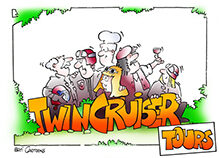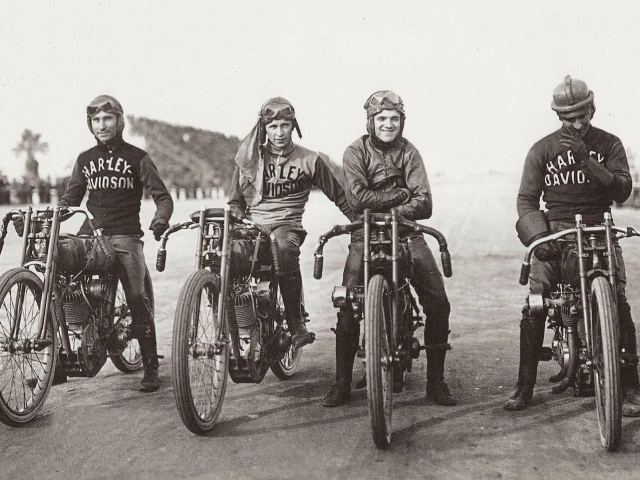The story of Harley-Davidson is a legendary tale of American entrepreneurship and the enduring spirit of motorcycling.
It all began in the early 1900s, when two young enthusiasts, William S. Harley and Arthur Davidson, embarked on a journey to build their own motorcycles.
In 1903, William S. Harley, a draftsman, designed a small engine that could fit into a bicycle frame. With the help of Arthur Davidson, a young machinist, they began building their first prototype motorcycle in a small workshop in Milwaukee, Wisconsin. This marked the birth of Harley-Davidson Motor Company.
The first Harley-Davidson motorcycles were single-cylinder machines with modest power, but they were reliable and well-constructed. Over the years, the company continued to innovate and refine its designs, introducing V-twin engines that became a hallmark of Harley-Davidson motorcycles. These V-twin engines were known for their distinctive sound and provided the power needed for long-distance riding.
Evolution of Harley-Davidson
During World War I, Harley-Davidson supplied the U.S. military with motorcycles, further solidifying their reputation for ruggedness and reliability. After the war, many veterans turned to motorcycles for recreation, and Harley-Davidson’s popularity surged.
In the 1920s and 1930s, Harley-Davidson continued to thrive, despite the challenges of the Great Depression. The company introduced iconic models like the «Knucklehead» and the «Flathead.» These motorcycles further cemented Harley-Davidson’s status as an American icon.
However, like many businesses, Harley-Davidson faced difficulties during World War II when civilian production ceased, and the company shifted its focus to producing military motorcycles. After the war, Harley-Davidson rebounded and introduced the “«Panhead» engine, followed by the «Shovelhead» and «Evolution» engines in the ensuing decades.
The 1980s brought changes to the company, including ownership shifts and quality control issues. In 1981, Harley-Davidson was purchased from the American Machine and Foundry (AMF) by a group of investors led by Vaughn Beals and Willie G. Davidson, the grandson of Arthur Davidson. This change in ownership marked a turning point for the company.
Under new leadership, Harley-Davidson underwent a revitalization effort focused on improving product quality and reconnecting with its core customer base. This included launching the «Harley Owners Group» (HOG), which helped foster a sense of community among Harley riders.
In the 1990s and early 2000s, Harley-Davidson enjoyed tremendous growth and success, driven by a resurgence of interest in motorcycles and the allure of the brand’s heritage. The company expanded its product lineup, introduced the popular «Softail» and «Dyna» families of motorcycles, and even ventured into international markets.
Harley-Davidson motorcycles became more than just vehicles; they became symbols of freedom, individualism, and the open road. The distinctive Harley-Davidson logo, with its bar-and-shield design, became one of the most recognizable logos in the world.
However, in the late 2000s and early 2010s, Harley-Davidson faced new challenges as it grappled with changing consumer preferences and economic downturns. The company has since embarked on a strategy to diversify its product offerings, targeting a younger and more diverse customer base while continuing to honor its rich history.
The company’s story is a testament to the enduring appeal of the American motorcycle and the spirit of adventure that comes with it.

